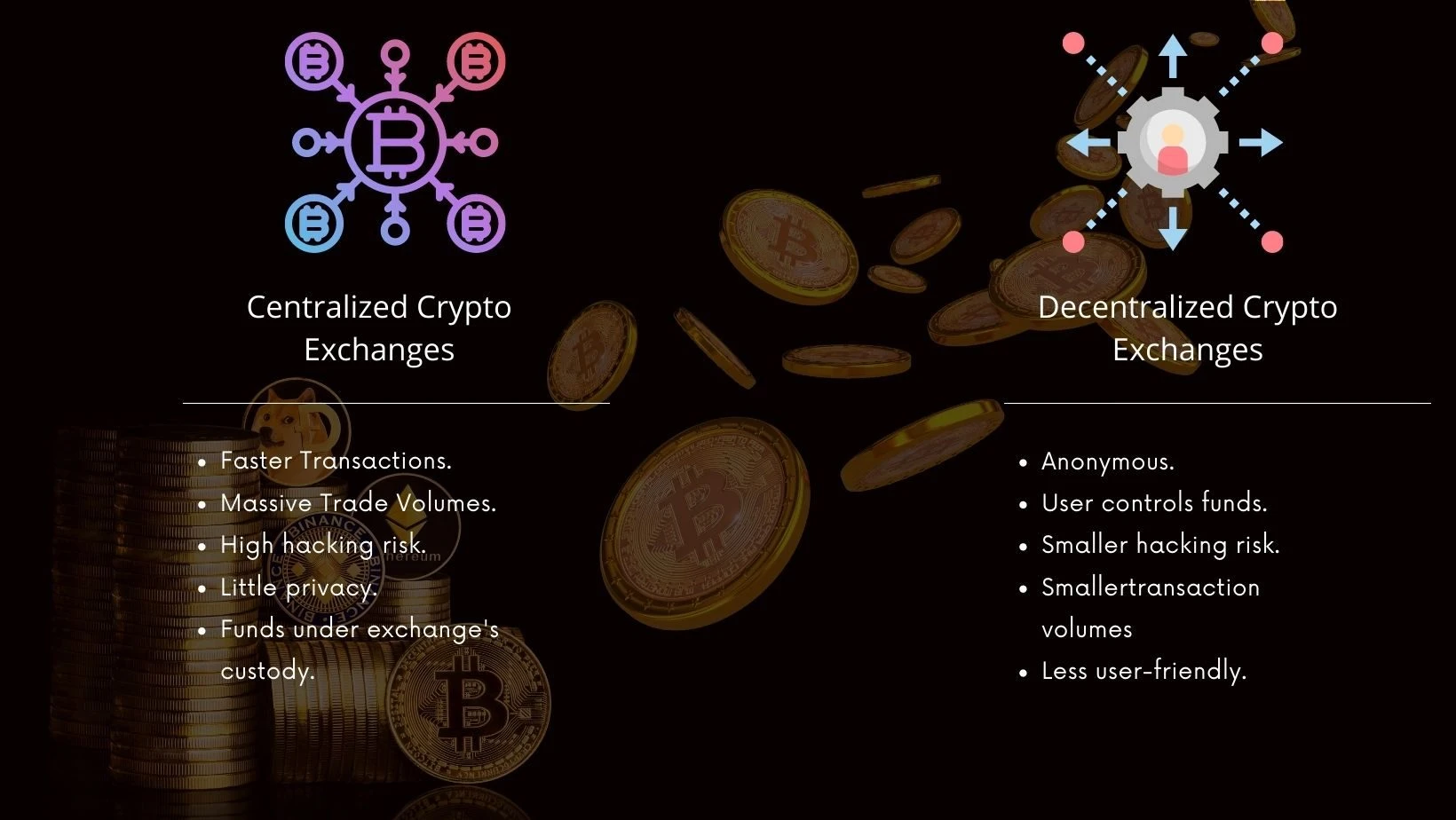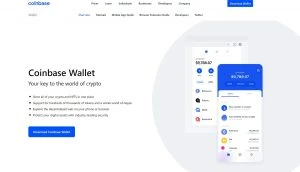What is Web3?
Cryptocurrencies are now common with more than 7000 listed and still more are coming out. The technology behind them is however bigger than many of us imagine. If you’re just getting started, you can read about how cryptocurrencies work. Blockchain, the distributed ledger that records information immutably is finding other smart uses that are making it a necessary part of our daily lives. Today you can lend and borrow anonymously online without engaging with a traditional bank. You can play immersive virtual games, own virtual property as NTFS, and be part of autonomous clubs and organizations with no central authority. This is what the Web3 is all about. It is what many are calling the future of the internet. This is the internet built on a decentralized distributed ledgers, or blockchain, just like your favourite cryptocurrency. Unlike the ‘old’ internet, Web3 is owned by both builders and users, as defined by famous investor Packy McCormick. Users have a financial stake in and control over Web3.
But why the name Web3? Although the internet is said to have been around since the 1960s, it was only until 1990, when HTML, FTP and SMTP came into life that the internet became useful. It was mainly for sending and receiving emails, as well as publishing blogs and webpages. This was the Web1, popular as the “Read and Write Internet.” The Web2 was born about a decade later, when the internet started having more uses such as social interaction, and gaming. Facebook, Twitter, Youtube, are major features of the Web2. One notable fact is that the Web2 mobilized content from users, yet all the control and even money generated from user content would be distributed among big companies. Now we have the Web3 that promises democracy in the way resources are created, controlled and owned by introducing decentralization. For example, Spotify users pay a subscription, watch ads and generate traffic that makes money for the founders only. A Web3 version would allow subscribers to invest in upcoming musicians and later earn from their streaming royalties.
Decentralized Autonomous Organisations (DAO), which automate decisions through a token-based voting system are an example of the Web3 community. Proponents argue that the Web3 will define the next era of the World Wide Web by crashing internet monopolies that control information and introduce democracy to the Web. The Web3 seeks to bring about decentralized social networks, play-to-earn games that reward participants in crypto tokens or NFTs, and create a middleman-free internet economy. On the other hand, critics question the viability of Web3 amid regulatory, ethical, and environmental hurdles. Some people also think that Web3 is doing poorly at education hence coming out a confusing scam ridden fairly-tale. Developers are busy writing codes that can only be understood by other programmers, leaving the real users at the mercy of poorly educated marketers in a rush to make money. Nevertheless, new technologies don’t miss challenges. Just like the advent of crypto, Web3 carries a lot of potential and has already started transforming people’s lives. Big companies such as Twitter are drawn in too. One of the things you need to get started is a Web3 wallet. You’ll be earning tokens, and collectibles such as NFTs, so you need a place to store them. Read on to keep learning.
Intro to Web3 Wallets
Now that you know about the Web3, let’s learn about associated wallets. Just like physical wallets store paper money, credit/debit cards and even out identification documents, Web3 wallets help users store digital assets. They are at the core of decentralized finance. Wallets actually don’t hold virtual assets, but they keep information required to access them on the blockchain. Remember crypto is distributed across it’s network. Therefore you will hear some terms like seed phrase, public keys and private keys when dealing with Web3 wallets. Let’s look at what they are.
- Public Keys: Public keys are used to transfer digital currencies to another wallet. Think of them as your email address. Anyone can look it up send mails. It’s also similar to the details such as account number and routing number that you provide to someone who wants to send money to your bank account. Anyone can have such details but they won’t use them to access your account, know your balance or even withdraw your money, right?
- Private Keys: Private keys, on the other hand is the information you need to prove ownership of a crypto account. You will need private keys to verify a transaction when someone sends you crypto and prove that you’re the new owner of the digital assets. Private keys are similar to passwords and hence should be kept secretly. Anyone with access to your private keys can steal your funds.
- Seed Phrase: There is a thin line between seed phrases and private keys. Private keys are sets of codes. Not everyone is a techy guru so this has to be simplified otherwise we stick to traditional banking. So seed phrases, also called secret recovery phrases are used in the place of private key codes. Wallets such as TrustWallet will give you a set of random words when signing up. These are your seed phrases. Keep them safely.
Different Web3 Wallets
You’ll come across several types of wallets in Web3. While they almost serve a similar purpose, they all have strengths and weaknesses. Users pick their favourite wallets according to use cases. It’s recommended to try out different wallets until you find one that works well for you.
1. Cold Wallets
Cold storage simply means keeping your private keys offline. You may do so using hardware wallets, or any other form that lets you store them away from the internet. The two main cold storage methods are hardware and paper wallets.
- Hardware Wallets: Hardware wallets are physical wallets for storing your private keys. Most of them look like computer USBs. Meaning, they store your keys offline since they lack internet connectivity. There are many companies that manufacture hardware wallets. They typically range from about $30 to upwards of $250 depending on individual features. Each hardware storage comes with a user guide to help you download and install the right operating software. Advanced hardware Web3 platforms like Radar have a new feature that allows users to trade directly from the wallet. Remember your money is live on the blockchain, so private keys simply open and close the address that stores your assets on the blockchain. Hardware wallets are commonly referred to as cold wallets as they hold your keys off the internet. No one else can transact your money if they don’t have your hardware wallet, which carries your keys.
- Paper Wallets: Paper wallets are another form of cold storage. They usually store your private keys in QR code format. Paper wallets offer an alternative to investors who are not in a position to buy hardware wallets, so they are non-custodial cold storage options. They are however largely a thing of the past. You can lose them or damage them since paper is fragile, but it’s possible to keep them safely just as you do with paper money. To set up a paper wallet, you need to download a paper wallet generator. You’ll use it to create private keys, your wallet address and a quick-response code (QR-Code). Print them on paper and store them safely. It’s recommended to delete your download link both from the internet and your computer after this. Clear any other information that may be related to your keys and QR too. Scan your computer for viruses before downloading and printing this information. After printing, don’t forget to test your keys just to be sure that they are working right. Remember a simple mistake could mean permanent loss of your money.
2. Hot Wallets
Hot wallets include the entire list of Web3 wallets with a constant connection to the internet. You can access them from your phone or PC anytime. All you need is access to the internet and you can log into your hot wallet. The most attractive part of hot wallet is convenience. The flipside is that they expose you to risk of losing your digital assets to hackers. The main types of hot wallets are mobile wallets, web wallets and desktop wallets.
- Mobile Wallets: Mobile wallets are software programs (apps) installed on mobile devices such as phones and tablets to store a user’s Web3 payment data. They are preferred by investors who like shopping with crypto as supported merchants stores. Near field communication technology facilitates payment with mobile wallets. In this case the keys to your digital assets are stored online. Mobile wallets are stylish and user friendly. All your keys are stored locally on your mobile device. Certain mobile wallets offer an alternative cloud storage option or your keys. While these wallets come with convenience and flexibility, there’s high exposure to online security risks such as hacking.
- Desktop Wallets: Just like mobile wallets, desktop wallets are downloadable apps for your PC. The best Web3 desktop wallets are compatible with all major operating systems. Upon downloading and installing your desktop wallet successfully, you can use it for storage, or trading Web3 products. Of course your private keys are stored locally in your PC, but there is still a hacking risk since our computers are connected to the internet most of the time. The other downside is that desktop wallets can only be accessed though the computer on which they were installed.
- Web Wallets: Web Wallets, also called online wallets run on the cloud are the most common type of hot Web3 wallets. Keep in mind that these wallets are usually used by crypto exchanges. They are online 24/7 and can be accessed from any part of the world as long as the user is connected to the internet. Most Web3 beginners opt for these type as they are easy to set up and operate. You only need a simple password and username to access your online wallets in most cases. Web Wallets carry the highest risk of hacking. Users are advised to always counter-check the website’s URL before typing in their details to avoid phishing traps.
Why do You Need a Web3 Wallet?
Wallets serve one main purpose storage. With increased competition, different Web3 wallets providers are now offering other complementary features to their users, like trading and staking. As mentioned earlier, the Web3 is a broad field covering more than just cryptocurrencies. There are also collectibles such as NTFS that Web3 earn by participating in certain activities like play-to-earn games. Not all wallets have the same storage capabilities. Just like we have big and small wallets in real life. There are those that only store Bitcoin and Ethereum, while others support thousands of cryptos and NFTs. A proper Web3 wallet should be compatible with all the assets that you’re interested in for convenience. Exchanges like Binance and Coinbase.com give users an option to purchase and store digital assets in their online account. We call these custodial crypto wallets. Users in such cases have no control over private keys. Instead they trust that the exchange will be responsible enough to keep them safe. Whenever a user places an order (buy/sell or send money) in a custodial wallet, the exchange will complete the transaction according to the user’s instructions. True DeFi investors use key-based non-custodial wallets. Owners in this case are in full control of access keys and control their digital assets. Non-custodial DeFi wallets are anonymous, so users are not required to verify their KYC details.
What is a Non-Custodial Wallet?
Non-custodial wallets are the opposite of custodial wallets and give users custody over private keys. The underlying principle is that the owner is in full control of their funds, and the wallet provider doesn’t have access to the keys. Meaning, the provider can’t be able to freeze or manage cryptocurrency held in users’ wallets in any way. Remember wallets only store access keys, and the real assets remain distributed on the blockchain. Wallet providers simply give you an interface to communicate with the blockchain address that stores your virtual assets.
Understanding and Using Non-Custodial Wallets
Custodial wallets are convenient and easy, notoriously user-friendly. They however carry the highest risk of hacking. We are not just talking about a single user account being tampered with, but the entire exchange can hit by crypto fraudsters. Mt. Gox went bankrupt in 2014 after losing more than 800,000 bitcoins to a security breach. You may have guessed right that these were customer assets that were stolen. That’s where non-custodial wallets become superior. Keeping your own private keys reduces risk significantly. No one can steal from you unless you leak your access keys. Secondly, the entire wallet can’t be targeted by hackers. The Web3 comes with lots of opportunities. After earning NFTs or tokens from playing your favourite games, you can stake them, transfer them to a lending pool and earn interest, and more. You can only find these Web3 compatible features in a non-custodial wallet.
Setting Up a Non-Custodial Wallet:
- Identify your preferred provider: We recommend Coinbase Wallet
- Download a wallet application: Go to the Web3 wallet provider and hit the ‘download button.’
- Create an account: Non-custodial wallets don’t ask for personal details during registration. Everything is anonymous. Simply provide a user name of choice and that’s it.
- Secure your private keys: You’ll be redirected to a page with your seed phrases or private key once you click “create account.” Make sure to secure them. The safety of your money depends on how well you keep these keys.
- Start using your Wallet: You’re all set now. Feel free to transfer your digital assets into your newly created wallet.
Web3 Wallets on Centralized Exchange (CEX) vs. Decentralized Exchange (DEX)
Your first landing point when starting out in Web3 will probably be a crypto exchange. Just like stock trading exchanges, these are market place where digital assets are traded. Binance, Gemini, Kraken and Crypto.com are just but a few examples of exchanges you’re likely to interact with. Centralized exchanges have a similar working model to traditional financial institutions. The exchanges provide middleman services by facilitating all user transactions. They have order books, and list stream prices from a liquidity provider. It’s their responsibility to fill your orders whenever you are performing a transaction. Decentralized exchanges work with a different model. They purpose to fulfil the original crypto tenets of decentralization. DEXs offer peer-to-peer trading without third parties intervention. Buyers and sellers meet, agree on prices and transact. The exchange only acts as an escrow to enhance trust and honesty between transacting parties. DEXs charge lower transaction fees compared to CEXs, and offer users an transacting environment free from some regulatory burdens. Most CEXs offer custodial services. They require users to place assets in their custody and partial control. This is unlike DEXs that stick to the decentralization that permeates blockchain technology. Most decentralized exchanges give users full control over their assets and access keys.

Your key to blockchain applications
MetaMask

MetaMask is among the most popular Web3 hot wallets today. In case you’re wondering how cool it is, there are over 21 million crypto investors using MetaMask today. We even have MetaMask Casinos. It runs on the Ethereum blockchain and is designed to work with dApps. The wallet supports all ERC20 tokens. MetaMask works as a browser extension plugin and is compatible with Firefox, Chrome, Edge and Brave. A mobile app version was recently released to. Your access keys are stored locally on your browser, or on your mobile device, depending on the version you’re using. With this wallet, you can buy coins directly. Users can trade on layer 2 platforms like Polygon, and Binance Chain. Be reminded that MetaMask only supports ERC20 tokens.
Coinbase Wallet

Coinbase is the best recommendation for beginners out of our list of Web3 wallets. It’s the latest US-licensed crypto provider by transaction volumes. The exchange serves over 200 countries worldwide and offers 119+ digital assets. You can store all your crypto, NFTs and even take part in ICOs with this wallet. As a popular company with a massive client base, the firm offers Coinbase.com as a custodial wallet and Coinbase Wallet as a non-custodian wallet for Web3 users. Coinbase Wallet is hence a true non-custodial wallet and is not held on Coinbase exchange servers. It’s among the most secure and user-friendly DeFi platforms. It has a 2FA for login and extra features such as biometric security.
Argent

Like MetaMask, Argent is an ERC 20 Web3 wallet. It doesn’t stop there. Argent uses smart contracts to solve the challenge of long key phrases for non-custodian wallets. Users appoint guardians and give them voting rights. Guardians vote and verify a user in case of a lost password, enabling you to recover your account and reset login details. The concept employed here is similar to blockchain transaction verification, except that a user knows the guardians and there is no solving complex puzzles. Argent is popular for hosting apps that allow users to participate in lending to earn interest. Your choices are limited to an Android or iOS mobile app. The wallet isn’t available as a Web Wallet, desktop app or any other version.
Rainbow

Rainbow is another ERC20 Web3 wallet. In case you’re wondering why ERC20, Ethereum was the first blockchain to introduce dApps and smart contracts. It’s also the only one that has proven and successful concepts for far. Although Web3 is diverse, it’s currently built mainly on the Ethereum network. Rainbow is compatible with Ethereum blockchain-based dApps. Users can swap coins directly from their dashboard. In terms of UI, the wallet has a more appealing interface compared to other Ethereum Web3 wallets. Rainbow is a hot mobile wallet. Ensure you have all your important data backed up and including seed phrases.
Bottom Line
The first step to making a sensible crypto investment is finding the best Web3 wallets suiting your needs. By now, you should be able to differentiate your needs and determine whether you’ll go for a cold or hot wallet. Security is always the most crucial factor to consider when looking for a wallet. Check for licensing, website security features such as encryption and 2FA, and even the reputation of a wallet. The easiest way to find information about wallets is to read through different reviews across the internet. The Web3 space is diverse, so we recommend starting out with a simple hot wallet like Binance or Coinbase before advancing to cold storage devices. We hope you love reading our content.



